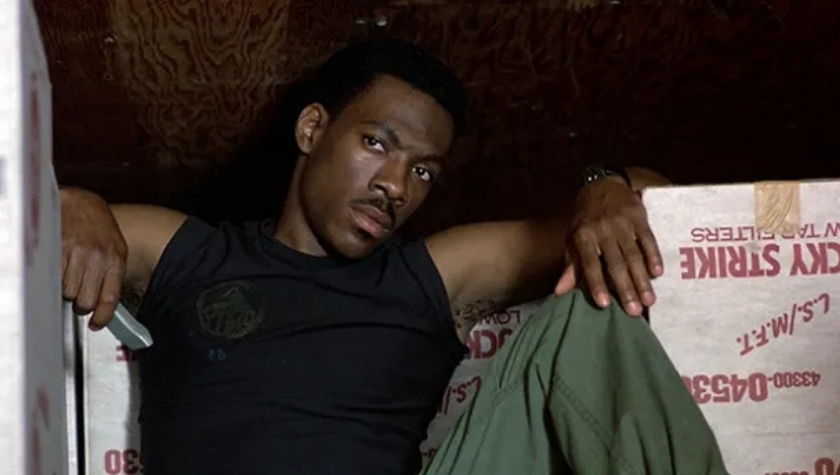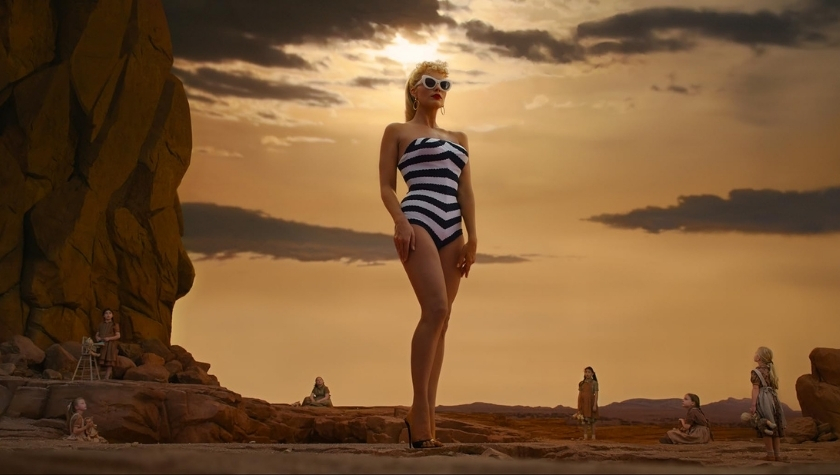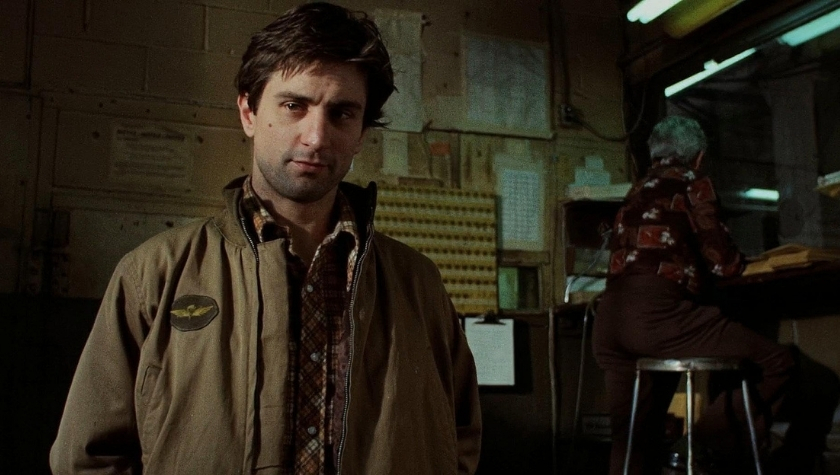Character descriptions and introductions in screenplays have evolved over the decades, and they continue to do so today.
Modern screenwriting guidelines emphasize keeping descriptions concise and purposeful. This is especially true for character introductions: only include what the audience needs to know at that exact moment. Let the character’s actions, reactions, and a touch of creative exposition or gradual reveals throughout the script show who they are, rather than relying on lengthy background details.
Here are some specific instructions for introducing a character in your script:
- Always introduce your characters by putting their character name in CAPS the first time we meet them.
- Only give wardrobe details if absolutely necessary eg. the wardrobe says something meaningful about the character.
- Share their specific age and ethnicity only if necessary, so as to keep casting options as open as possible.
- Don’t go into character background detail that we can’t outright see visually, beyond a line or two that may offer a visual without outright describing one.
But there’s more to it than that, right? You, the screenwriter, want to give your characters the best possible entrance. You want them to stick out and make their presence known. But how can you do that without overwriting their descriptions and introductions?
Here we go back to some of the most iconic characters in film and look at how they were introduced in their respective screenplays. We’ll then offer some general observations, giving you an idea of how you can introduce your characters in today’s screenwriting.
Note: Some descriptions are not exactly how they appeared onscreen due to casting, rewrites, wardrobe changes, etc.
1. Alonzo Harris in 'Training Day'
DETECTIVE SERGEANT ALONZO, in black shirt, black leather jacket. And just enough platinum and diamonds to look like somebody. He reads the paper in a booth. The gun leather-tough LAPD vet is a hands-on, blue-collar cop who can kick your ass with a look.
An excellent description that sums up the character perfectly without going into unnecessary descriptions that we can’t see onscreen.
2. Annie Wilkes in 'Misery'
Her name is ANNIE WILKES, and she is close to Paul’s age. She is in many ways a remarkable creature. Strong, self-sufficient, passionate in her likes and dislikes, loves and hates.
The description sets up her character so well and gives us a hint at who she is in any given situation. We know when she likes something, she is very passionate about it. But she’s also passionate about what she dislikes and hates, which teases a sense of danger about her.
3. Apollo Creed in 'Rocky'
The SPORTS COMMENTATOR is at the airport and about to interview the heavyweight champion of the world, APOLLO CREED. Creed is twenty-eight years old. He is a tall, smooth-muscled black man with barely a scar on his light coffee-colored face…
With a name like that, we know this character needs to have a presence the first time we see him - and, sure enough, the description captures the look of this heavyweight champion of the world with ease.
4. Axel Foley in 'Beverly Hills Cop'
AXEL FOLEY, a very good-looking, out-going, totally unselfconscious man of 23, hops down INTO THE FRAME from the top of the stack of cigarette cases. Axel is dressed very casually in a pair of jeans and a denim shirt.
Short, sweet, and to the point. With one sentence, we get an idea of who he could possibly be within this story. The description also notes his casual wardrobe, so we don’t yet know if he’s a cop yet, which offers some added intrigue.


5. Clarice Starling in 'The Silence of the Lambs'
A woman’s face BACKS INTO SHOT, her head resting against grimy wallpaper. She is tense, sweaty, wide-eyed with concentration. This is CLARICE STARLING, mid-20’s, trim, very pretty. She wears Kevlar body armor over a Navy windbreaker, khaki pants. Her thick hair is piled under a Navy baseball cap. A revolver, clutched in her right hand, hovers by her ear.
The character description manages to offer normally opposing elements with the mention of her being trim and pretty, but also with a dangerous edge of the body armor and wide-eyed concentration. We normally don’t see these character elements together in one character so there’s immediate intrigue.
6. Ellen Ripley in 'Alien'
RIPLEY............ Warrant Officer
The character of Ripley was actually a man in the original draft. Beyond that note, the screenplay didn’t bother too much with character description. Instead, it just listed the ensemble characters of the crew.
7. Hannibal Lecter in 'The Silence of the Lambs'
DR. HANNIBAL LECTER is lounging on his bunk, in white pajamas, reading an Italian Vogue. He turns, considers her… A face so long out of the sun, it seems almost leached - except for the glittering eyes, and the wet red mouth. He rises smoothly, crossing to stand before her; the gracious host. His voice is cultured, soft.
This description is a bit more poetic, but with those choice words we get a sense of elegance coming from the character. In the context of the script, it’s even more chilling that he’s one of the most deadliest serial killers in history.
8. Hans Gruber in 'Die Hard'
The doors to a service elevator open to REVEAL HANS GRUBER, impeccably dressed, lean and handsome, he steps out into the lobby like he owns the building – and in a way he does.
Possibly one of the greatest examples of less is more when it comes to character description. If you know the movie and character, you know that this sentence is spot-on when it comes to villain Hans Gruber. It’s a great description that accompanies the reveal of the character so well.
9. Indiana Jones in 'Raiders of the Lost Ark'
A narrow trail across the green face of the canyon. A group of men make their way along it. At the head of the party is an American, INDIANA JONES. He wears a short leather jacket, a flapped holster, and a brimmed felt hat with a weird feather stuck in the band.
They dropped the feather part of the wardrobe during production, but the description does its job, allowing the character’s later actions and reactions to define who he is beyond the mention of being American, being the head of the party, and clearly being dressed for adventure.


10. Jack Sparrow in 'Pirates of the Caribbean: The Curse of the Black Pearl'
On the landward face of the sail, apparently high in the rigging, is a man for whom the term “swashbuckling rogue” was coined: Captain JACK SPARROW.
Two words: Swashbuckling and Rogue. Those are simple terms that say so much more than two or three sentences ever could.
11. John Coffey in 'The Green Mile'
John Coffey is a huge black man, nearly 7 feet tall and 300 pounds, his massive head shiny and bald, his skin a tapestry of old scars, his prison overalls (the biggest size they had) ending at mid-calf. He looks dull and confused, as if wondering where he is and how he got there.
Coffey is an imposing character, and the description captures that flawlessly. The last sentence offers an opposing element to him as well, which leads into the story about to be told.
12. Luke Skywalker, Princess Leia, and Han Solo in 'Star Wars'
Luke Skywalker
The tremendous heat of two huge twin suns settle on a long figure, Luke Skywalker, a farm boy with heroic aspirations who looks much younger than his eighteen years. His shaggy hair and baggy tunic give him the air of a simple but lovable lad with a prize-winning smile.
Princess Leia
The lovely young girl huddles in a small alcove as the stormtroopers search through the ship. She is Princess Leia Organa, a member of the Alderaan Senate.
Han Solo
Han is a tough, roguish starpilot about thirty years old. A mercenary on a starship, he is simple, sentimental, and cocksure.
The dated script didn’t adhere to any CAPS rules when it comes to putting a character’s name in CAPS when we first see them. Beyond that, the character elements shared are all we need to know initially.
13. Barbie in 'Barbie'
One of the girls looks UP.
Something has appeared in their midst. Something NEW. It’s a GIANT BARBIE DOLL - BARBIE MARGOT, the 1950s Barbie, with her black and white swimsuit and lipstick.
The character description is describing an already iconic look - Barbie in her iconic black and white swimsuit and lipstick. And that’s all we need because the character is so well known around the world. It’s basic and completely effective.


14. Oppenheimer in 'Oppenheimer'
A FACE. Gaunt, tense, EYES TIGHTLY SHUT. The face SHUDDERS – the sound CEASES AS MY EYES OPEN, STARING INTO THE CAMERA:
Peer into my soul - J. ROBERT OPPENHEIMER, aged fifty, closecropped greying hair. The gentle sounds of bureaucracy...
The screenplay speaks in first person for the opening of the film, putting the reader into the story as we face Oppenheimer for the first time (after strange opening dream-like visuals). The writer uses CAPS not just for the first appearance of Oppenheimer, but also to pinpoint certain visuals for stylistic effect.
15. Michael Corleone in 'The Godfather'
MICHAEL CORLEONE, dressed in the uniform of a Marine Captain, leads KAY ADAMS through the wedding crowd, occasionally stopped and greeted by friends of the family.
Basic scene description. We have immediate respect for him because of his uniform, and the way the accompanying action shows that he’s respected amongst the crowd.
16. Mr. Miyagi in 'The Karate Kid'
As he rounds the corner, he is startled coming face to face with an old Oriental man brandishing a set of chopsticks in the air. A name patch on his shirt identifies him as MIYAGI.
Contemporary preferences would use the word Asian instead of Oriental.
17. Oda Mae Brown in 'Ghost'
She turns back to the closet and opens the door. Like magic, ODA MAE BROWN, 41, appears standing inside. She is a black woman in a white tunic. The whiteness of her garment makes it look as if she is glowing in the dark. Mrs. Santiago is wide-eyed. Sam smiles as Oda Mae steps into the room.
The character description of Oda Mae is less about her character, and more about the entrance she’s making.
18. Norman Bates in 'Psycho'
The Young Man follows Mary in, closes the door. He is NORMAN BATES, somewhere in his late twenties, thin and tall, soft-spoken and hesitant.
The last two words of description - soft-spoken and hesitant - inform the reader (and eventual casted actor) how the character should be portrayed in their interactions with others.


19. Rick Blaine in 'Casablanca'
MED. SHOT – RICK
Sitting at the table alone. He just sits, staring at the drink. There is no expression in his eyes. He is a complete dead pan. Rick is an American of indeterminate age.
The script is from the 1940s, so the screenwriters often designated camera shots and such. They introduce the character of Rick within a specific camera angle, and use both his actions (or lack thereof) and current look to give us an idea of what kind of character he is.
20. Rocky Balboa in 'Rocky'
The white fighter is ROCKY BALBOA. He is thirty years old. His face is scarred and thick around the nose… His black hair shines and hangs in his eyes. Rocky fights in a plodding, machine-like style.
The screenwriter (Sylvester Stallone himself) does an excellent job of quickly describing the kind of fighter Rocky is.
21. Sarah Connor in 'The Terminator'
SARAH CONNER is 19, small and delicate-featured. Pretty in a flawed, accessible way. She doesn’t stop the party when she walks in, but you’d like to get to know her. Her vulnerable quality masks a strength even she doesn’t know exists.
The screenwriter (James Cameron) takes some time to pinpoint specific looks of the character, giving us a sense of who she is and may prove to be. The last sentence sums up her character perfectly - a context we will understand later on in the story. It builds anticipation by telling us that she has a strength she doesn’t yet know exists.
22. The Terminator in 'The Terminator'
FRAME comes to rest on the figure of a NAKED MAN kneeling, faced away, in the previously empty yard. He stands, slowly. The man is in his late thirties, tall and powerfully built, moving with graceful precision. C.U. – MAN, his facial features reiterate the power of his body and are dominated by the eyes, which are intense, blue and depthless. His hair is military short.
This man is the TERMINATOR.
There are some camera directions amidst the otherwise excellent description, primarily because the script was written by the film’s director, James Cameron. The descriptive word and phrases give us a true sense of how the Terminator moves, laying out the perfect visual for us to see as we play the movie in our heads.
23. Travis Bickle in 'Taxi Driver'
TRAVIS BICKLE, age 26, lean, hard, the consummate loner. On the surface he appears good-looking, even handsome; he has a quiet steady look and a disarming smile which flashes from nowhere, lighting up his whole face. But behind that smile, around his dark eyes, in his gaunt cheeks, one can see the ominous stains caused by a life of private fear, emptiness and loneliness. He seems to have wandered in from a land where it is always cold, a country where the inhabitants seldom speak. The head moves, the expression changes, but the eyes remain ever-fixed, unblinking, piercing empty space. Travis is now drifting in and out of the New York City night life, a dark shadow among darker shadows. Not noticed, no reason to be noticed, Travis is one with his surroundings. He wears rider jeans, cowboy boots, a plaid western shirt and a worn beige Army jacket with a patch reading, “King Kong Company 1968-70.” He has the smell of sex about him: Sick sex, repressed sex, lonely sex, but sex nonetheless. He is a raw male force, driving forward; toward what, one cannot tell. Then one looks closer and sees the inevitable. The clock spring cannot be wound continually tighter. As the earth moves towards the sun, Travis Bickle moves towards violence.
The description of this dangerous character is very overwritten by today’s standards. However, it’s highly effective. It sets up this taxi driver and creates instant tension with every scene he’s in.


24. Wall-E in 'Wall-E'
Something moving on the ground far below.
A figure at the foot of a trash heap.
A SMALL SERVICE ROBOT diligently cubing trash.
Rusted, ancient.
Cute.
Every inch of him engineered for trash compacting.
Mini-shovel hands collect junk.
Scoop it into his open chassis.
His front plate closes slowly, compressing waste.
A faded label on his corroded chest plate:
“Waste Allocation Loader - Earth Class” (WALLY)
No character could have been more perfectly described than this. We get easy visuals thrown at us via single descriptive words, accompanied by basic actions that define the character and his movement. The formatting is a little off, with spec scripts likely being expected to space out those lines of description. But it works here. And the script was written by established animation writers.
25. Thelma and Louise in 'Thelma & Louise'
LOUISE is a waitress in a coffee shop. She is in her early-thirties, but too old to be doing this. She is very pretty and meticulously groomed, even at the end of her shift. She is slamming dirty coffee cups from the counter into a bus tray underneath the counter. It is making a lot of RACKET, which she is oblivious to. There is COUNTRY MUZAK in the b.g., which she hums along with.
THELMA is a housewife. It's morning and she is slamming coffee cups from the breakfast table into the kitchen sink, which is full of dirty breakfast dishes and some stuff left from last night's dinner which had to "soak." She is still in her nightgown. The TV is ON in the b.g. From the kitchen, we can see an incomplete wallpapering project going on in the dining room, an obvious "do-it-yourself" attempt by Thelma.
Brilliant character descriptions that capture the world that we later learn they want to escape from. Descriptive words, their environment, and their subtle actions show us who these characters are.
You Don’t Always Need to Dazzle Readers in Your Character Descriptions
Sometimes screenwriters don’t write enough. Other times, they write too much. Different screenplays will call for different types of introductory descriptions - and different characters will require less or more.
Protagonists deserve the most attention, with major antagonists next in line.
There’s really no right or wrong way beyond the basic guidelines and expectations. And you don’t always have to dazzle readers with creative and impactful character descriptions. But if you can offer even a hint of cleverness, style, magic, and purpose with your character descriptions and character introductions, you’ll offer the reader (and your characters) a good jumping point into the story.

